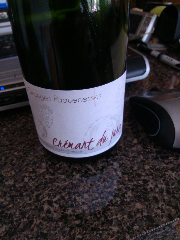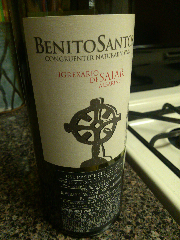There comes a time in all of our lives that we are forced to reassess who we are, what we do, and why we do it. Leaving wine retail and entering wholesale has created one of those paradigm shift moments bringing me face to face with what wine, the business and drinking of, means to me. What helped me refocus a little was listening to interviews on illdrinktothatpod.com where host, and pro sommelier, Levi Dalton interviews people in the wine world. Each conversation he has with an importer, a winemaker, authors, etc. illustrates the knowledge, passion, and tenacity necessary for each of their fields. So this forced me to think: why wine?
What is it about wine that has captivated my attention and that of so many others? I spent time thinking about this after listening to the interview with Peter Weygandt while I was running on some length of the Anacostia Tributary Trail System. I decided that, in a Kantian sort of way, I believe in wine because I think it can improve the quality of one’s life. I choose it for myself and thus I choose a world in which I think it should be important to others. Obviously wine is also an intoxicant that, if misused, has the ability to ruin the quality of one’s life as well. Anything taken to excess can be problematic, though. I respect the decisions of those who don’t drink wine, but the person who abstains from wine and instead consumes an equal amount of Mountain Dew, or mindlessly consumes case after case of Coors are not better for their substitutions. So what is it that I believe makes wine superior?
The maxim that wine is food is not a novel one, but it does illustrate a relevant point about what makes wine worthy of our attention. The amount of farmer’s markets, ethnic, artisan, and specialty shops that can be found with relative ease I take as evidence that there are people who are interested about where their food is coming from and put thought into what they consume.
Further examination into a food culture or, for the purposes of this essay, a bottle of wine forces inspection into just that: culture. Wine does not exist within a vacuum, but it instead exists because of where and when it is from. Examining wine forces the examination of geography, history, philosophy, language, literature, art, politics, science, agriculture, and an unnamed litany of other specific fields of interest.
Not to belabor a point, but this is why I believe wine has the potential to improve quality of life. It can help teach about the world around us and open our minds to all sorts of opportunities and experiences we might not expect. It may not be a new theme in this blog of mine, but I will continue to promote the idea that we should all learn a little more about the wine we’re drinking and to seek out the new and novel and learn about that as well.
… an Obligatory Aside About Thanksgiving Wine
What should you drink for Thanksgiving? Whatever you damn well please! If you want to try new and novel, do it. If you want to stick to the old tried and true, that’s fine too. The holiday is about enjoying yourself and trying not to let family or travel drive you too crazy. So even though I think we should always seek out new wine, I’ll leave that up to you this week as time is spent with loved ones.
What I’m having though will be something along the lines of:
- Domaine de la Pepiere 2010 Clos des Briords Muscadet, never a bad idea in my opinion
- Who wants Vouvray?.
- If I’m in a Greek sort of mood, maybe DioFili 2009 Xinomavro.
- Perhaps some grignolino or ruche from northern Italy?
- Dominique Piron’s Cru Beaujolais (I haven’t decided on the cru or the vintage yet.)
- A late bottle vintage port will appear somewhere during the meal.
- Maybe some hard cider if I see anything interesting.
Happy Thanksgiving.


